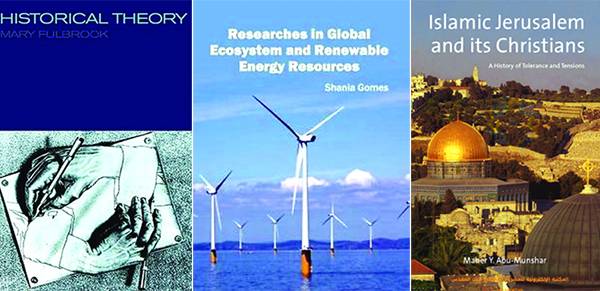
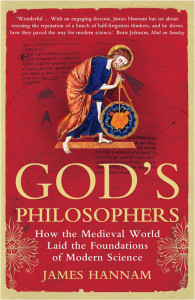
God’s Philosophers
James Hannam
Icon Books (paperback), 2010
PRs 1195
The adjective ‘medieval’ is now a synonym for superstition and ignorance. Yet without the work of medieval scholars there could have been no Galileo, no Newton and no Scientific Revolution. In “God’s Philosophers”, James Hannam traces the neglected roots of modern science in the medieval world. He debunks many of the myths about the Middle Ages, showing that medieval people did not think the earth was flat, nor did Columbus ‘prove’ that it is a sphere. Contrary to common belief, the Inquisition burnt nobody for their science, nor was Copernicus afraid of persecution. No Pope tried to ban human dissection or the number zero. On the contrary, as Hannam reveals, the Middle Ages gave rise to staggering achievements in both science and technology: for instance, spectacles and the mechanical clock were both invented in thirteenth-century Europe. Ideas from the Far East, like printing, gunpowder and the compass, were taken further by Europeans than the Chinese had imagined possible. The compass helped Columbus to discover the New World in 1492 while printing allowed an incredible 20 million books to be produced in the first 50 years after Gutenberg published his Bible in 1455. And Hannam argues that scientific progress was often made thanks to, rather than in spite of, the influence of Christianity. Charting an epic journey through six centuries of history, “God’s Philosophers” brings back to light the discoveries of neglected geniuses like John Buridan, Nicole Oresme and Thomas Bradwardine, as well as putting into context the contributions of more familiar figures like Roger Bacon, William of Ockham and St Thomas Aquinas. Besides being a thrilling history of a period of surprising invention and innovation, “God’s Philosophers” reveals the debt modern science and technology owe to the supposedly ‘dark’ ages of medieval Europe.
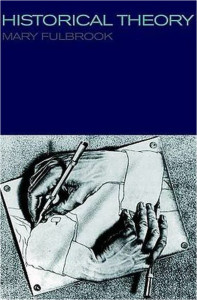
Historical Theory
Mary Fulbrook
Routledge (paperback), 2008
PRs 705
Purchasing historians claim that their accounts of the past are something other than fiction, myth or propaganda yet there are significant challenges to this view, most notably from postmodernism. In Historical Theory, a prominent historian develops a highly original argument that evaluates the diversity of approaches to history and points to a constructive way forward.
Against naive empiricism, Mary Fuibrook argues that all historians face key theoretical j questions, and that an emphasis on the facts alone is not enough. Against postmodernism, she argues that historical narratives are not simply inventions imposed on the past, and that some answers to historical questions are more plausible or adequate than others. The argument of Historical Theory is illustrated by numerous substantive examples and its focus is always on the most central theoretical issues and on real strategists for bridging the gap between the traces of the past and the interpretations of the present Historical Theory is essential and enlightening reading for all historians and their students.
The Author:
Mary Fuibrook is Professor of German History at University College, London, Her numerous books include A Concise History of Germany (1 991), Anatomy of a Dictatorship: Inside the GDR, 1949-89(1995). German National Identity after the Holocaust 1 999) and History of Germany 1918-2000: The Divided Nation (2002).
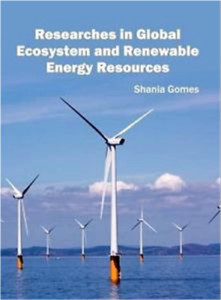
Researches in Global Ecosystem and Renewable Energy Resources
Shania Gomes
Routledge (hardcover), 2016
PRs 18030
There has been an emphasis on using renewable energy resources worldwide for addressing the emerging energy crisis and preservation of global ecosystems. This book brings forth some of the most innovative concepts and elucidates the unexplored aspects of this field. The topics included herein are monitoring carbon emissions from different sources, climate variability, evaluation of various fuel and energy sources and their impact on environment, etc. The book is aimed at providing a comprehensive understanding of the field to the students and researchers engaged in the field.
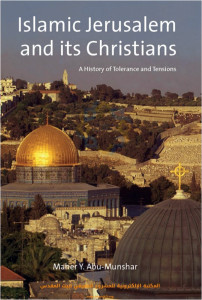
Islamic Jerusalem and its Christians: A History of Tolerance and Tensions
Maher Abu-Munshar
I B Tauris (hardcover), 2008
PRs 10700
Islamic Jerusalem has a special place in the hearts of the three monotheistic religions. Throughout its history it has been the site of tolerance and tensions. Islamic Jerusalem and its Christians presents a critical look at historical events during the time of two key figures in the history of Islam: firstly Caliph ‘Umar Ibn Al-Khattab, who played a critically important role in the birth and spread of Islam. Secondly Sultan Salah al-Din, the legendary ‘Saladdin’ of Western Crusader lore, whose peace negotiations with Richard the Lion-Heart, King of England Abu Munshar brings to life here. This pioneering study uses extensive original research to explore Muslim treatment of non-Muslims in the 7th Century and in the Middle Ages. A valuable source of reference for all interested in Islamic and Middle Eastern studies, Religion and Medieval History, Islamic Jerusalem and its Christians establishes and develops new evidence for academic debate.
Review
“The book brings forward new approaches and horizons as well as new evidence that can stir the academic debate relating to Muslim-Christians relations in general and Muslims treatment of Christians in Jerusalem in particular...an extremely important piece of research and an invaluable contribution to Middle Eastern, historical and religious studies as well as addressing international relations.” – Dr. Mahdi Zahraa, Director of Postgraduate Research Studies Programme in the Division of Law Glasgow Caledonian University
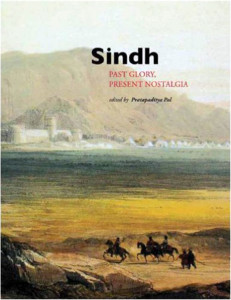
Sindh: Past Glory, Present Nostalgia
Pratapaditya Pal
Marg Foundation (hardcover), 2008
PRs 8090
Sindh represents a unique geopolitical entity in the history of the Indian subcontinent. Drained by the Indus, its fertile plains stretch between the mountain ranges of Baluchistan to the west and the Thar desert in the east. Across the passes through Baluchistan, Sindh connects with Iran; on the eastern side the desert cuts it off from the mass of India barring a few caravan routes. The Indus delta makes up for this acting as a trade artery along its length and giving Sindh strong maritime links with Kutch and Gujarat and across the Arabian Sea with the Persian Gulf. Situated at the crossroads of diverse cultural influences, its physical terrain has fostered a variety of crafts from the time of the Indus Civilization to the present. Three major events have contributed to the shaping of Sindh’s history, politics, and culture: the Muslim conquest in 711, the British conquest in 1843, and the Partition of India in 1947. The last has been the most dramatic and far-reaching, altering the demography of the region when the Hindus moved out and Muslim refugees from other parts of India moved to Pakistan. This is the first lavishly illustrated book to look at the heritage of Sindh, with chapters by scholars from both India and Pakistan. The first half takes note of the famed Indus Civilization; the Buddhist Stupas and Sculpture, Hindu temples, Islamic monuments and tombs; the port city of Banbhore; and the coinage and economy up to the time when the British annexed Sindh. Later chapters evoke a sense of cultural nostalgia on a range of subjects: the colourful woven and embroidered fabrics of Sindh; the visual records of the region by British artists and photographers; Karachi, cosmopolitan city of Sindh, modelled on Bombay, as remembered by those who once lived there; the sense of tumult and displacement which still resonates in works by artists on both sides of the border; and the distinctive cuisine of the province as remembered by Diasporic Sindhis.

